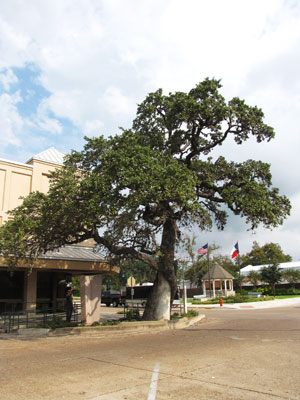
Founded near a Colorado River crossing used by Indians and Spanish explorers, the City of La Grange's development resonates with themes predominant across Texas history. The earliest residents, with evidence dating back to 1527, were Tonkawa and Comanche Indians who pursued the great herds of buffalo. White settlers began moving into the area began as early as the 1820s, fueled by cheap land grants given by Stephen F. Austin. Indian raids continued until the 1840s.
In 1826, a twin blockhouse called Moore's Fort was built within what is now the city limits. By 1831, a small community had developed and in 1837, a town was platted. When the Congress of the Republic of Texas established Fayette County the same year, La Grange became its seat of government. Fayette County is named after the Marquis de Lafayette, a Revolutionary War hero. The City of La Grange takes its name from his chateau to which he retired. La Grange-area citizens were instrumental in the fight for Texas independence with soldiers meeting under the Muster Oak Tree.
During the 1840s and 1850s German and Czechs immigrants began arriving in Fayette County and set down roots as they settled on farms and set up businesses in town. As immigrants continued to pour into the area, by 1890 approximately 25% of the local population was foreign-born. After Fayette County reached its population peak of approximately 36,000 in 1900, the population steadily declined. Gradually, the economy of the county transitioned from small farms that raised cotton and corn to larger, more mechanized operations that focus on cattle. Another factor contributing to the dwindling population of the county was the prospect of better paying jobs in nearby cities. That served as an enticement to servicemen who were returning after Word War II not to return to the farm.











